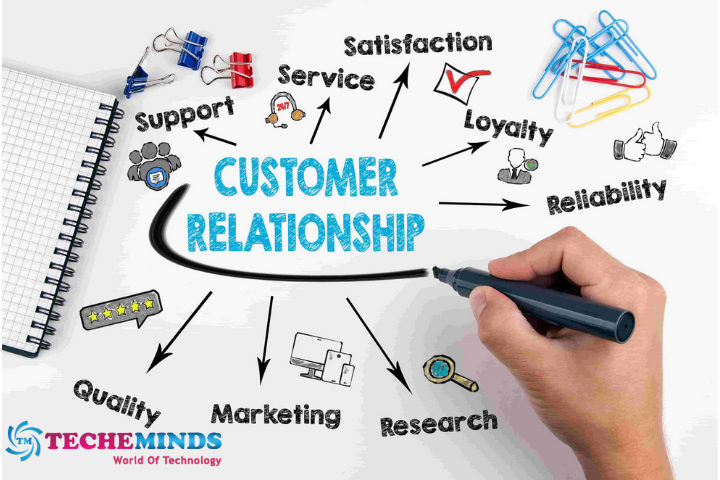5 Ways To Build Success In A Customer Relationship

build Success in a customer relationship doesn’t just happen. It requires persistent behaviors, clear communication, and an emphasis on value. Businesses that develop strong customer relationships enjoy higher retention rates, better Feedback, and have greater levels of referrals. Businesses that don’t grow and deepen relationships lose trust and revenue.
Table of Contents
5 Ways To Build Success In a Customer Relationship
Here are five clear-cut ways to strengthen every customer relationship.
1. Listen Actively and Respond Fast
Listening is one of the simplest aspects of communication, yet it is often the most neglected. Customers feel more satisfied when they can relay their experiences and feel heard. You’re trying to listen whenever a customer comments or expresses an issue. You should listen, reiterate their concerns, ask follow-up questions to clarify, and show that you understand their issue before offering a solution.
Timeliness is also important. Long response times will make anyone frustrated. Use the benefits of automation for routine questions, but do not make it so that a customer has to make an effort to talk to a human. Customers will appreciate a quick, thoughtful response and trust your handling of their issue.
For example, if a customer contacts you to report a late package, do not respond and say, “Sorry, but we are looking into that.” Respond with “Thank you for bringing that to our attention. Your order was scheduled to arrive on the 10th, let me confirm with the carrier and get back to you within the hour.” Provide omniscience and take action.
2. Set and Manage Expectations Early
Trust is an essential ingredient to creating a successful and positive customer experience. Trust is built by setting expectations right from the start. Clearly state what the customer can expect – price, the time to provide the service, refunding rules and guidelines, and when/how you will communicate with them.
Do not commit to what you cannot deliver. If anything occurs, contact the customer before they first contact you. It is (100%) better to say “We are running into a delay and here is why”, than not to say anything and hope the customer doesn’t notice. Being open and honest in communication is a good way to present yourself as responsible.
When customers have expectations, they will have more confidence in your service. Always be open and honest, rather than confusing.
3. Tailor Your Communications
Customers do not want cookie-cutter service. They want to feel unique, not a number. Use their name. Use their history of purchases. Offer based on what you know.
Technology does not need to be complex- A simple spreadsheet or small CRM could log a lot of information. Write notes about preferences or issues. You will be using that knowledge for future interactions.
For instance, if a customer buys a particular item all the time, suggest elevated versions or other newer alternatives. If they had a problem last time, check in once they have ordered again. Those very small steps will become meaningful.
Personalization makes your customer relationship more personal. People are loyal to brands that give them a human connection.
4. Take the Right and Resolve Problems Fast
Mistakes often happen. Deliveries can go wrong. Products fail. What ultimately matters is how we deal with them. Pointing a finger at the courier, system, or client does nothing but erode trust.
Take ownership! Fix the circumstance. Decent and clear communication with the customer on the process, and follow up when the issue has been resolved. This will help transform a negative moment into a trust moment.
Your team needs to have a little mobile footwear on the ground to resolve a problem quickly. In a situation where everybody is tied to rigid procedures and slow escalation, even more stress is applied to the right resolution. Frontline team members are empowered to make decisions to protect the customer relationship, benefiting everyone.
Customers can forgive a mistake when it has been appropriately fixed. Customers cannot and will not forgive silence or denial.
5. Ask for Feedback and Act on Feedback
Your business will never be perfect, but it should always be improving! Ask your customers what they think! You can acquire Feedback through short surveys, rating asks, or open questions!
The most important thing is not asking for Feedback; it’s acting on it. If you get the same complaint more than once, make a change. Don’t just gather data, share what you learned. For example: “Based on your feedback, we have expanded our hours of support”.
Show your customers that their opinions are important to you, to create a loop of trust: you listen, they speak, and things improve! Over time, this produces loyal customers.
Final Thoughts
Every prosperous customer relationship based on simple actions performed consistently. Listening well. Defining expectations. Individualizing service. Taking ownership. Always improving.
None of these five steps is capital-intensive or highly involved. Just effort and intentionality. Focus on the relationship; success naturally follows through loyalty, referrals, and sustainable growth.
Put the customers first, and they will put you first.
